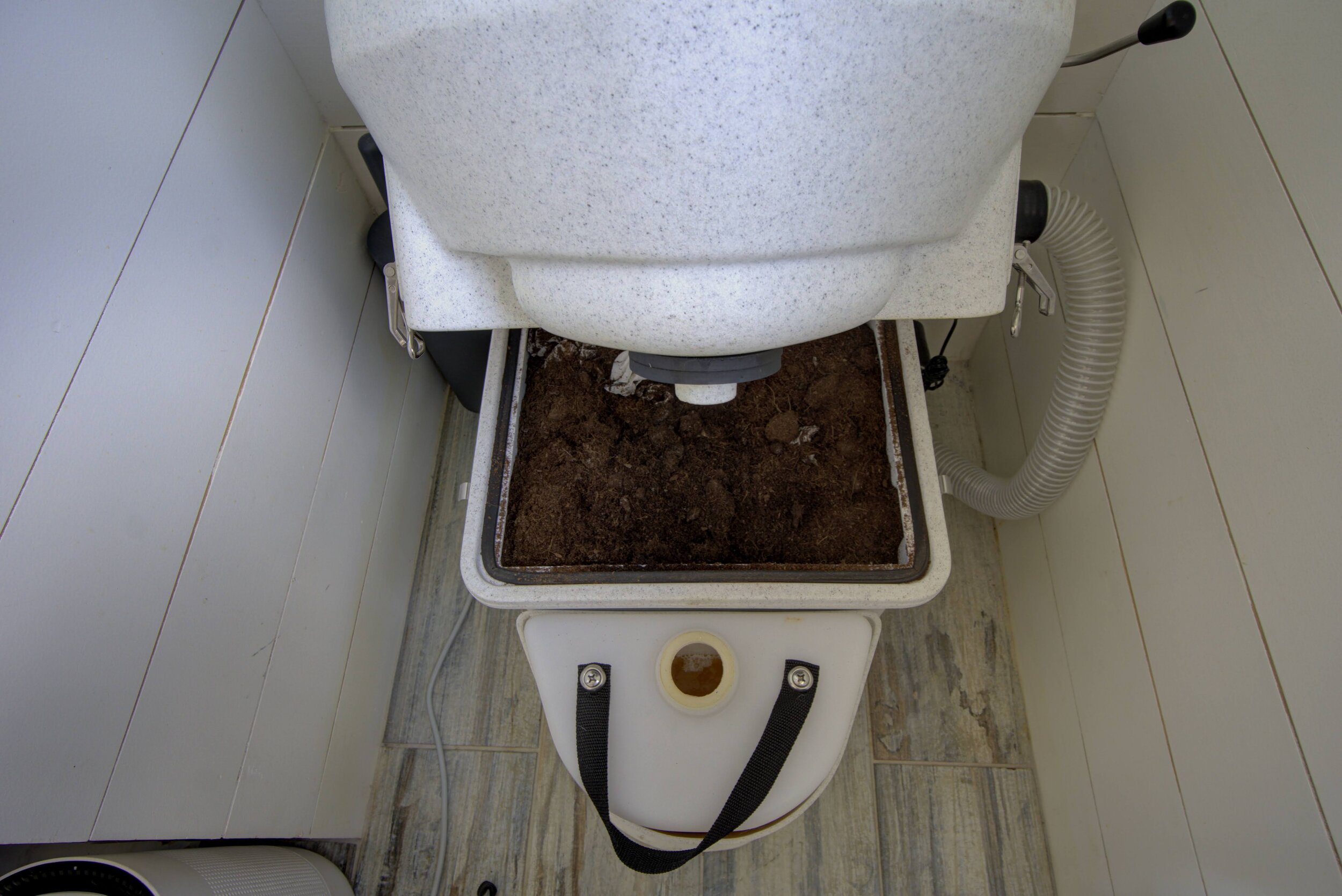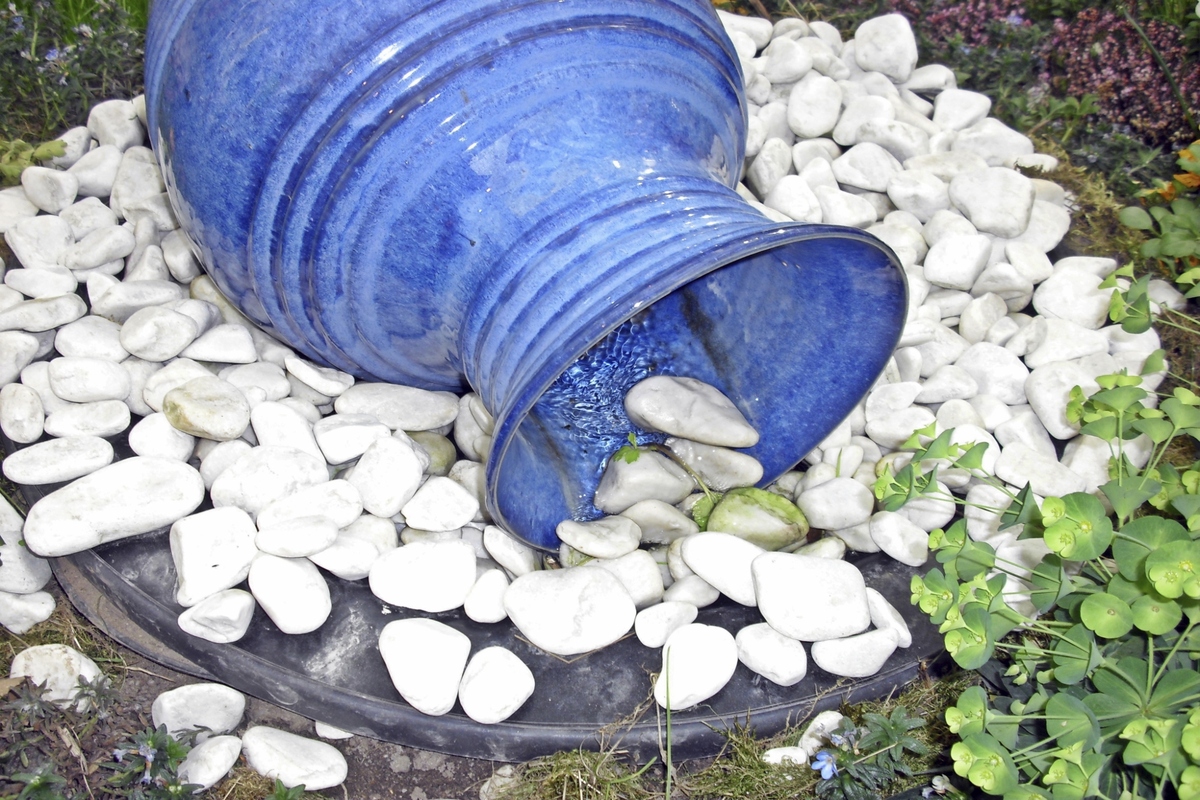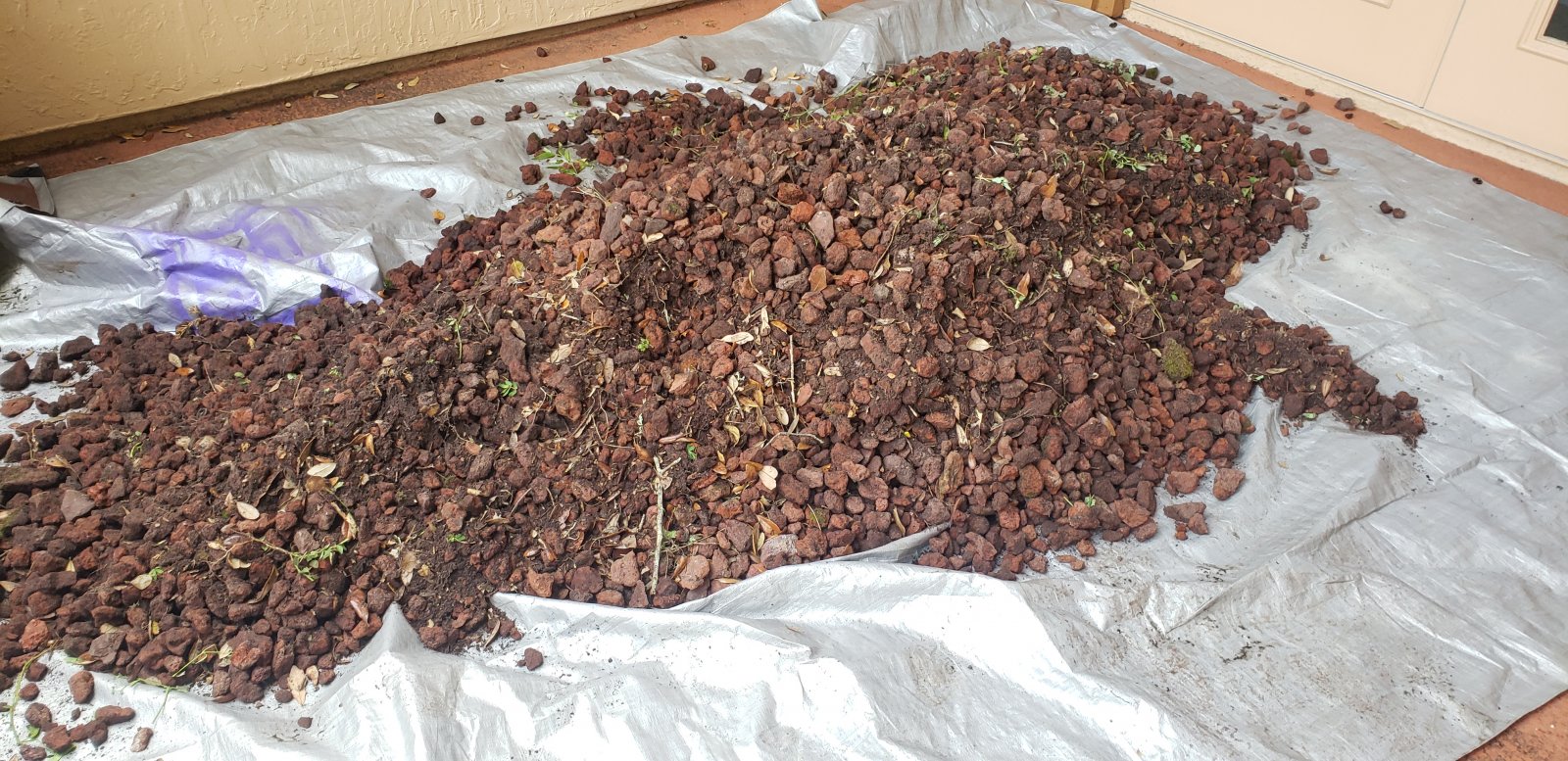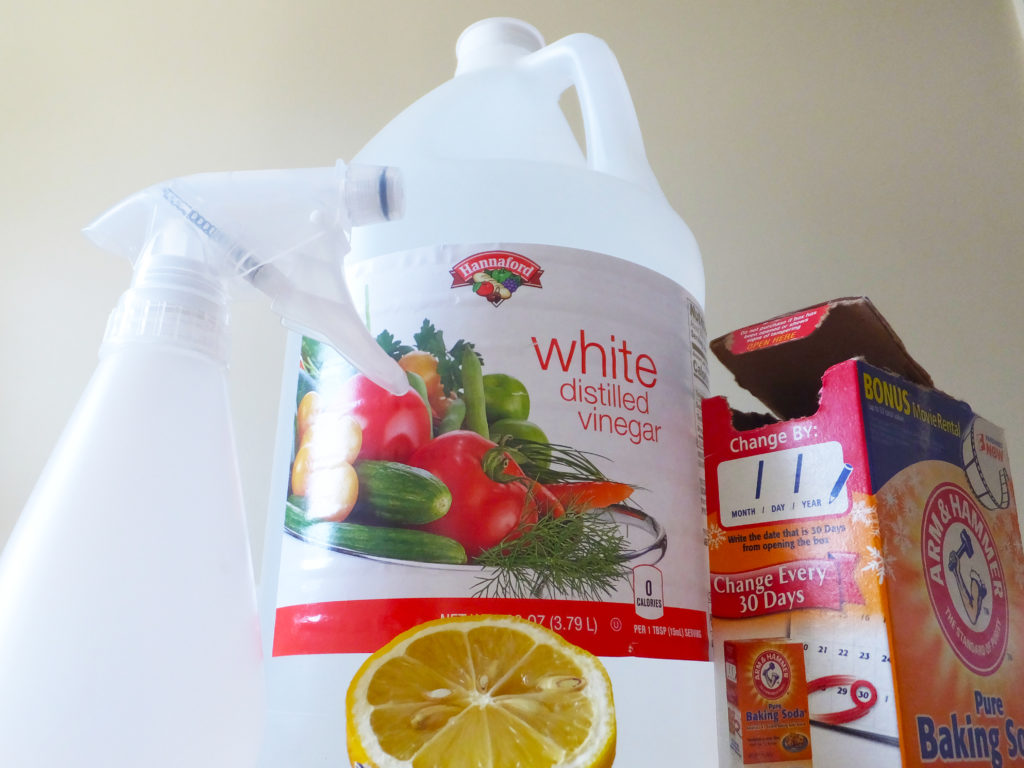Home>Gardening Tips and Tricks>Problem Solving>How To Clean Up A Garden Full Of Weeds


Problem Solving
How To Clean Up A Garden Full Of Weeds
Published: December 13, 2023
Learn effective problem-solving techniques to clean up a garden full of weeds and restore its beauty. Discover expert tips and tools for efficient weed removal.
(Many of the links in this article redirect to a specific reviewed product. Your purchase of these products through affiliate links helps to generate commission for Chicagolandgardening.com, at no extra cost. Learn more)
Table of Contents
Introduction
Maintaining a vibrant and thriving garden is a labor of love that brings immense joy and satisfaction. However, the presence of persistent weeds can quickly turn this idyllic vision into a daunting challenge. Weeds not only detract from the visual appeal of your garden but also compete with your cherished plants for essential nutrients, water, and sunlight. In the battle for garden supremacy, these unwelcome intruders often seem to have the upper hand. Fear not, for with the right approach and a touch of perseverance, you can restore your garden to its former glory.
Weeding is an essential aspect of garden care, and while it may seem like a never-ending task, it is a manageable one. This comprehensive guide will equip you with the knowledge and techniques needed to effectively combat weeds and reclaim your garden sanctuary. We will explore both traditional and modern methods, enabling you to choose the approach that best aligns with your preferences and the unique characteristics of your garden.
Whether you are a seasoned gardener or just beginning to explore the wonders of horticulture, this guide will provide valuable insights and practical strategies for conquering the weed invasion. By the time you have completed this journey, you will possess the tools and know-how to transform your garden into a flourishing oasis, free from the clutches of invasive weeds. Let's embark on this transformative gardening adventure together, as we delve into the art of cleansing a garden plagued by weeds.
Assessing the Situation
Before diving into the task of weed eradication, it is crucial to assess the extent of the infestation and understand the types of weeds that have taken root in your garden. Observing and identifying the various weed species will guide your approach and help determine the most effective methods for removal. Weeds can be broadly categorized as either annual, biennial, or perennial, each requiring distinct strategies for control.
Take a leisurely stroll through your garden, armed with a notepad and a keen eye. Note the locations and prevalence of different weed species, as well as the specific challenges they pose. Are there deep-rooted perennial weeds such as dandelions or thistles that demand special attention? Are annual weeds like chickweed or crabgrass spreading rapidly, threatening to overwhelm your prized plants? By gaining a clear understanding of the weed population and their growth patterns, you can tailor your approach to achieve maximum effectiveness.
Furthermore, consider the environmental factors that may be contributing to the proliferation of weeds. Are there bare patches of soil that invite weed seeds to germinate? Is the soil compacted, providing an ideal environment for weed growth? Understanding these underlying factors will enable you to address the root causes of weed infestation and implement preventative measures to discourage future weed encroachment.
By thoroughly assessing the situation, you can develop a targeted and strategic plan of action, ensuring that your efforts yield lasting results. Armed with this knowledge, you are ready to embark on the journey of reclaiming your garden from the clutches of persistent weeds.
Gathering the Necessary Tools
Equipping yourself with the right tools is essential for effectively combating weeds and restoring the health of your garden. Before embarking on your weeding endeavor, take stock of the necessary implements that will facilitate the task at hand. Here are the essential tools you should gather:
- Garden Gloves: Protect your hands from thorns, prickles, and potential irritants present in the weeds.
- Weeding Tool: A hand weeder or a long-handled weeding tool is indispensable for precision weed removal, especially for deep-rooted weeds.
- Garden Hoe: Ideal for cultivating the soil and swiftly removing surface weeds in larger areas.
- Pruning Shears: Use these for cutting and removing larger weeds or overgrown vegetation.
- Bucket or Garden Trug: Carry the removed weeds in a container to prevent them from reseeding in the garden.
- Herbicide (Optional): If opting for chemical weed control, select a suitable herbicide based on the weed species and the surrounding vegetation.
- Mulch: Prepare organic mulch, such as wood chips or straw, to suppress weed growth after removal.
With these tools at your disposal, you are well-prepared to tackle the weed invasion and restore the natural equilibrium of your garden. Each implement serves a specific purpose, empowering you to address a variety of weed types and growth patterns. Additionally, the use of protective gear, such as gloves, ensures your safety and comfort throughout the weeding process.
By gathering these essential tools, you are poised to embark on a journey of rejuvenating your garden, armed with the means to effectively combat weeds and foster a flourishing environment for your cherished plants.
Removing Weeds by Hand
Hand weeding is a meticulous yet highly effective method for tackling weeds, particularly in areas where precision is paramount, such as around delicate plants or in small garden beds. This approach allows for the targeted removal of weeds while minimizing disruption to the surrounding soil and vegetation. Follow these steps to efficiently remove weeds by hand:
- Identify the Weeds: Approach each weed individually, identifying its root structure and ensuring that you grasp the entire plant, including the roots.
- Loosen the Soil: Gently loosen the soil around the base of the weed using a hand weeder or a trowel, taking care not to disturb nearby plants.
- Remove the Weed: Firmly grasp the weed at its base and pull it out in a steady, upward motion, ensuring that the entire root system is extracted from the soil.
- Dispose of the Weeds: Place the removed weeds in a designated container or garden trug to prevent any seeds from dispersing back into the garden.
- Inspect the Area: Thoroughly inspect the weeded area to ensure that no remnants of the weeds remain, as even a small portion of the root can lead to regrowth.
While hand weeding demands patience and attention to detail, it offers the advantage of targeted weed removal without the use of chemicals, making it an environmentally friendly approach. Additionally, this method allows you to closely interact with your garden, gaining a deeper understanding of its intricacies while nurturing a sense of connection with the plants under your care.
By diligently removing weeds by hand, you not only eliminate the immediate threat posed by these intruders but also contribute to the overall well-being of your garden, fostering a harmonious and thriving ecosystem for your beloved plants to flourish.
Using Herbicides
Herbicides can serve as a valuable tool in combating widespread weed infestations, offering a targeted approach to weed control when employed judiciously. It is essential to exercise caution and adhere to safety guidelines when using herbicides, as their application requires careful consideration of the surrounding vegetation and environmental impact. Follow these steps for the responsible use of herbicides in weed management:
- Identify the Target Weeds: Different herbicides are formulated to target specific weed species, so accurate identification of the prevalent weeds in your garden is crucial.
- Choose the Appropriate Herbicide: Select an herbicide that effectively targets the identified weed species while being compatible with the surrounding plants and soil.
- Follow Application Guidelines: Adhere to the manufacturer’s instructions regarding the proper dilution, application method, and timing for optimal effectiveness and minimal environmental impact.
- Apply with Precision: Use a targeted approach when applying herbicides, focusing on the weed-infested areas while avoiding contact with desirable plants.
- Observe Safety Precautions: Wear protective clothing, including gloves and eye protection, and ensure proper ventilation during herbicide application to safeguard your well-being.
- Monitor and Assess: After application, monitor the treated areas to assess the herbicide’s effectiveness and any potential impact on non-target plants.
While herbicides can be an effective tool for weed management, it is important to approach their use with a keen awareness of their potential impact on the environment and surrounding vegetation. When employed responsibly and in conjunction with other weed control methods, herbicides can contribute to the restoration of a weed-free garden environment.
By incorporating herbicides into your weed management strategy with care and consideration, you can address widespread weed infestations while safeguarding the overall health and balance of your garden ecosystem.
Mulching to Prevent Future Weed Growth
Mulching serves as a proactive and effective measure to suppress weed growth, enhance soil health, and conserve moisture in your garden. By creating a protective barrier over the soil, mulch inhibits the germination and establishment of weed seeds while providing a range of additional benefits. Here’s how you can harness the power of mulch to prevent future weed growth:
- Select the Right Mulch: Choose organic mulch, such as wood chips, straw, or shredded bark, which not only suppresses weed growth but also enriches the soil as it decomposes.
- Apply a Layer of Mulch: Spread a generous layer of mulch, approximately 2-3 inches thick, over the soil surface, ensuring that it covers the area around your plants and between garden rows.
- Maintain Mulch Depth: Regularly replenish the mulch layer to maintain the optimal depth, as it naturally decomposes over time and may become less effective in suppressing weed growth.
- Avoid Direct Contact with Plant Stems: Keep the mulch slightly away from the stems of plants to prevent moisture retention and potential rot, while still covering the soil surface thoroughly.
- Benefit Soil Health: Mulch contributes to improved soil structure, moisture retention, and temperature regulation, fostering a conducive environment for plant growth while deterring weed proliferation.
By implementing a robust mulching regimen, you create a formidable defense against future weed encroachment while nurturing the overall health and vitality of your garden. This proactive approach not only reduces the need for extensive weeding but also fosters a visually appealing and bountiful garden landscape.
Embrace the transformative potential of mulch as a natural ally in your ongoing battle against weeds, and witness the enduring benefits it bestows upon your garden, paving the way for a flourishing and low-maintenance outdoor haven.
Conclusion
As you emerge from the journey of rejuvenating your garden from the clutches of persistent weeds, armed with newfound knowledge and practical strategies, you stand poised to reclaim your outdoor sanctuary and foster a flourishing haven for your cherished plants. The art of cleansing a garden plagued by weeds is a multifaceted endeavor, requiring a blend of patience, precision, and proactive measures to achieve lasting success.
By meticulously assessing the situation and gaining a deep understanding of the weed population and environmental factors at play, you have laid the groundwork for a targeted and strategic approach to weed eradication. Equipped with the essential tools and a keen eye for precision, you have embraced the art of removing weeds by hand, nurturing a deeper connection with your garden while safeguarding its delicate ecosystem.
For widespread weed infestations, the responsible use of herbicides has provided a targeted and effective means of weed control, complementing your efforts to restore balance to your garden. Furthermore, the proactive application of mulch serves as a natural ally in preventing future weed growth, enriching the soil, and enhancing the overall health of your garden landscape.
As you continue to tend to your garden, the insights and techniques gleaned from this comprehensive guide will serve as a steadfast companion, empowering you to navigate the ongoing battle against weeds with confidence and resilience. Embrace the transformative potential of these strategies, and witness the enduring beauty and vitality that your garden radiates as it thrives in a weed-free environment.
With each weed meticulously removed, each application of mulch carefully laid, and each plant nurtured to its full potential, you are weaving a tapestry of natural harmony and abundance within your garden. Embrace this journey as a testament to your dedication and stewardship, and revel in the bountiful rewards that your meticulously tended garden bestows upon you.









